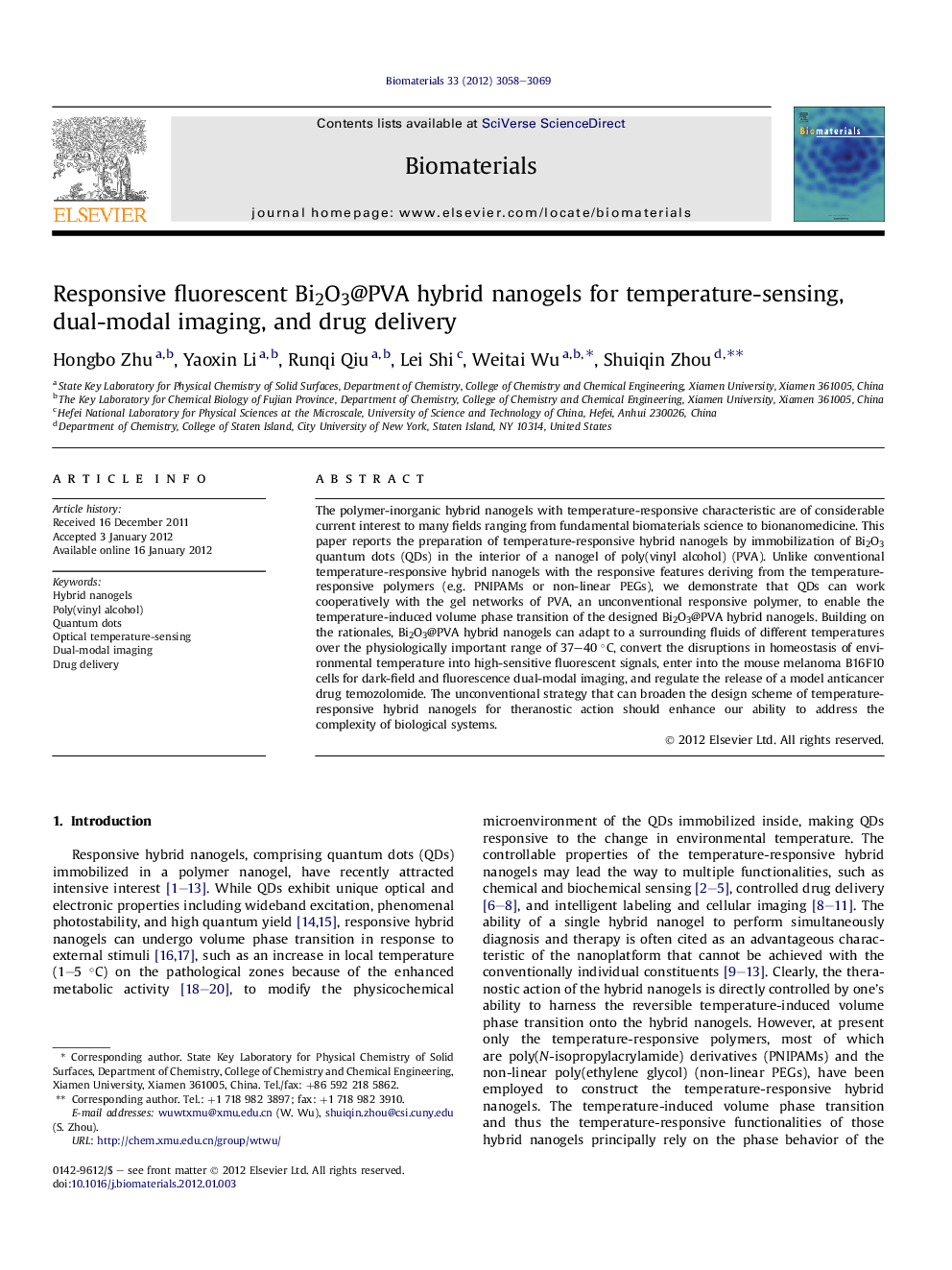| Article ID | Journal | Published Year | Pages | File Type |
|---|---|---|---|---|
| 7333 | Biomaterials | 2012 | 12 Pages |
The polymer-inorganic hybrid nanogels with temperature-responsive characteristic are of considerable current interest to many fields ranging from fundamental biomaterials science to bionanomedicine. This paper reports the preparation of temperature-responsive hybrid nanogels by immobilization of Bi2O3 quantum dots (QDs) in the interior of a nanogel of poly(vinyl alcohol) (PVA). Unlike conventional temperature-responsive hybrid nanogels with the responsive features deriving from the temperature-responsive polymers (e.g. PNIPAMs or non-linear PEGs), we demonstrate that QDs can work cooperatively with the gel networks of PVA, an unconventional responsive polymer, to enable the temperature-induced volume phase transition of the designed Bi2O3@PVA hybrid nanogels. Building on the rationales, Bi2O3@PVA hybrid nanogels can adapt to a surrounding fluids of different temperatures over the physiologically important range of 37–40 °C, convert the disruptions in homeostasis of environmental temperature into high-sensitive fluorescent signals, enter into the mouse melanoma B16F10 cells for dark-field and fluorescence dual-modal imaging, and regulate the release of a model anticancer drug temozolomide. The unconventional strategy that can broaden the design scheme of temperature-responsive hybrid nanogels for theranostic action should enhance our ability to address the complexity of biological systems.
